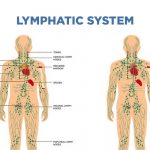Applications of vibration therapy in rehabilitation programs

Whole body vibration platforms are very popular as fitness tools and widely used in beauty centers for purposes like toning and strengthening the muscles, boosting weight loss, improving lymphatic drainage or enhancing flexibility. However, research indicates that WBV also has clinical potential, especially for patients suffering from conditions that affect their muscles and bones, or alter their balance and coordination.
Individuals affected by ailments like Parkinson’s disease, multiple sclerosis, spinal cord injuries, cerebral palsy, osteoporosis and even stroke survivors are among those who may benefit the most from whole body vibration therapy, research suggests. So in today’s article, we’ll focus on vibration exercises as a rehabilitation tool instead of fitness solution, and we’ll go through a series of studies that prove the beneficial effects of WBV in the mentioned conditions.
The use of vibration therapy in rehabilitation programs
For those of you who aren’t familiar with vibration training, here’s a quick intro. As the name implies, whole body vibration involves the application of a vibratory stimulus to the entire body. One can stand or sit on the platform, or can place only a targeted body area on the vibration machine, and can adjust the intensity of the vibratory stimuli by increasing or decreasing the frequency and amplitude.
In most machines, the frequency can be adjusted from the control panel, while the amplitude can be modified by placing the feet closer or farther from the machine’s central point. This applies to pivotal vibration machines like all Hypervibe models.
Speaking of frequency, most of the studies that showed beneficial effects of whole body vibration therapy in various conditions used frequencies between 25 Hz and 40 Hz, above this frequency range some unwanted effects like muscle fatigue and hematoma being likely to occur. Now, some of you may say that it’s not that impressive that your muscles and bones get stronger when exposed to such forces, or that circulation and lymphatic drainage are stimulated.
But what about the other benefits, what about the therapeutic effects of vibration exercises? Those are surely impressive and we’ll take a look at some studies right now, to see when and how can whole body vibration therapy help in rehabilitation.
WBV therapy in the rehabilitation of stroke survivors
In a previous article we showed that vibration therapy may improve balance and motor function of stroke survivors, as found by scientists from Korea and China. This form of therapy may be effective in strengthening the voluntary muscles and in improving postural control, although it’s still unclear whether these effects are long-term.
Australian researchers found WBV therapy to increase leg muscle activity in chronic stroke patients, but other studies showed no added benefit for vibration training compared to conventional exercise therapy post stroke. At the moment there isn’t a standard protocol for the use of vibration therapy in the rehabilitation of stroke survivors.
Whole body vibration therapy in COPD patients
In people affected by COPD (chronic obstructive pulmonary disease), doing conventional exercises may be difficult due to the damage of the lungs and the reduced breathing capacity.This condition manifests through the inflammation of the bronchial tubes and accumulation of mucus, which leads to unpleasant symptoms like clogged airways, wheezing, shortness of breath, cough and in some cases even pneumonia.
The delivery of oxygen to cells is also altered, and symptoms like fatigue and persistent headaches may occur. These make it difficult to do cardio or strength exercises, and may also decrease one’s desire to stay active, leading to a sedentary lifestyle. To prevent these, one may use a vibration training machine, as it requires less effort from the user, and can provide similar benefits to conventional strength training.
Chinese researchers have found that exercising on vibration machines may improve the functional training capacity and the quality of life in COPD sufferers. Their review study, published in the Clinical Rehabilitation journal, showed that in 206 participants, vibration training improved the mentioned parameters although the pulmonary function was not improved or significantly affected.
WBV therapy in Parkinson’s disease sufferers
Several papers have evaluated the effectiveness of vibration therapy in improving motor symptoms and postural control of people affected by Parkinson’s disease. A study published by Canadian researchers in the journal of NeuroRehabilitation showed that vibration exercises can reduce the tremor and decrease muscle rigidity, improving the step length of Parkinson’s disease sufferers.
Other study showed that vibration training at 25 Hz, done for 30 minutes per day, in two sessions, 5 days per week, can provide significant improvements in balance and motor function, results being similar to those obtained through conventional balance training.
Vibration exercises in cerebral palsy patients
Cerebral palsy affects mostly kids aged 2 to 3, being a common cause of brain abnormality and damage. This condition manifests through disabling symptoms like impaired muscle tone, stiff muscles, coordination problems and poor balance, movement problems, visual impairments, sleep and speech problems.
A study published in the journal of Research in Developmental Disabilities showed that whole body vibration therapy may be beneficial for kids affected by cerebral palsy, this form of therapy leading to improvements in muscle tone, range of motion in joints and ambulatory performance.
Have questions or comments? Post them below, or join our Facebook community and share your thoughts with us there!







